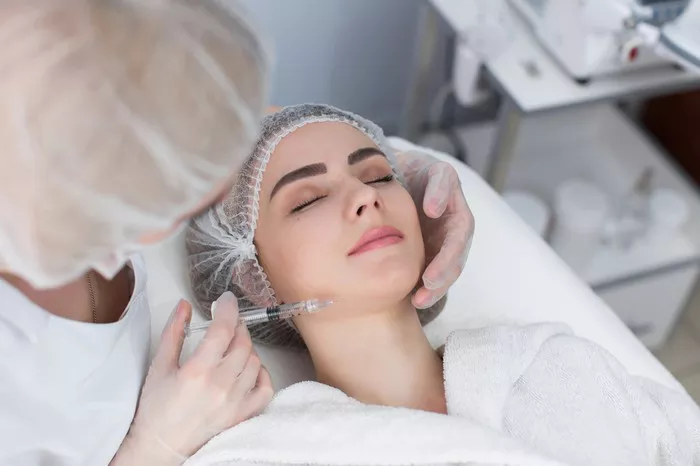Keloids are raised, thick scars that form at the site of an injury or surgery. While keloids are not harmful, they can be unsightly and may cause discomfort or itchiness. While there is no cure for keloids, there are several home remedies that can help to reduce their appearance and alleviate symptoms. In this article, we will explore the best home remedy for keloids.
What Causes Keloids?
Keloids are caused by an overgrowth of scar tissue at the site of an injury or surgery. While the exact cause of keloids is not known, they are more common in individuals with darker skin tones and may be hereditary.
Keloids can form at any age, but they are more common in individuals between the ages of 10 and 30. They can form at the site of any injury, including cuts, burns, and surgical incisions.
The Best Home Remedy for Keloids
While there is no cure for keloids, there are several home remedies that can help to reduce their appearance and alleviate symptoms. Here are some of the best home remedies for keloids:
1. Silicone Sheets
Silicone sheets are a popular home remedy for keloids. These sheets are placed over the keloid and left in place for several hours each day. The pressure from the silicone sheet can help to flatten the keloid and reduce its size.
Silicone sheets are available at most drug stores and can be purchased without a prescription. They are easy to use and can be worn discreetly under clothing.
2. Apple Cider Vinegar
Apple cider vinegar is another popular home remedy for keloids. The acid in apple cider vinegar can help to break down the excess scar tissue and reduce the size of the keloid.
To use apple cider vinegar for keloids, soak a cotton ball in the vinegar and apply it to the keloid. Leave the cotton ball in place for several hours, then remove it and rinse the area with water.
3. Aloe Vera
Aloe vera is a natural anti-inflammatory and can help to reduce the redness and itchiness associated with keloids. It can also help to soften the keloid and reduce its size.
To use aloe vera for keloids, apply a small amount of aloe vera gel to the keloid and massage it into the skin. Repeat this process several times a day.
4. Tea Tree Oil
Tea tree oil is a natural antiseptic and can help to prevent infection at the site of the keloid. It can also help to reduce inflammation and redness.
To use tea tree oil for keloids, dilute the oil with a carrier oil, such as coconut oil or olive oil. Apply the mixture to the keloid and massage it into the skin. Repeat this process several times a day.
5. Onion Extract
Onion extract is a natural anti-inflammatory and can help to reduce the redness and size of keloids. It is available in gel form and can be applied directly to the keloid.
To use onion extract for keloids, apply the gel to the keloid and massage it into the skin. Repeat this process several times a day.
6. Vitamin E Oil
Vitamin E oil is a natural antioxidant and can help to reduce the appearance of scars, including keloids. It can also help to moisturize the skin and reduce itchiness.
To use vitamin E oil for keloids, apply a small amount of the oil to the keloid and massage it into the skin. Repeat this process several times a day.
7. Lavender Oil
Lavender oil is a natural antiseptic and can help to prevent infection at the site of the keloid. It can also help to reduce inflammation and redness.
To use lavender oil for keloids, dilute the oil with a carrier oil, such as coconut oil or olive oil. Apply the mixture to the keloid and massage it into the skin. Repeat this process several times a day.
8. Baking Soda
Baking soda is a natural exfoliant and can help to remove dead skin cells from the surface of the keloid. This can help to reduce the size and appearance of the keloid.
To use baking soda for keloids, mix a small amount of baking soda with water to form a paste. Apply the paste to the keloid and massage it into the skin. Rinse the area with water and repeat this process several times a week.
Conclusion
Keloids are raised, thick scars that form at the site of an injury or surgery. While there is no cure for keloids, there are several home remedies that can help to reduce their appearance and alleviate symptoms.
Some of the best home remedies for keloids include silicone sheets, apple cider vinegar, aloe vera, tea tree oil, onion extract, vitamin E oil, lavender oil, and baking soda. These remedies are easy to use and can be purchased at most drug stores.
It is important to note that home remedies may not work for everyone and may take time to show results. If your keloid is causing discomfort or is affecting your quality of life, it is important to consult with a healthcare professional or dermatologist. They can recommend the most appropriate treatment options for your individual case.
[inline_related_posts title=”You Might Be Interested In” title_align=”left” style=”list” number=”6″ align=”none” ids=”4426,4368,4365″ by=”categories” orderby=”rand” order=”DESC” hide_thumb=”no” thumb_right=”no” views=”no” date=”yes” grid_columns=”2″ post_type=”” tax=””]































